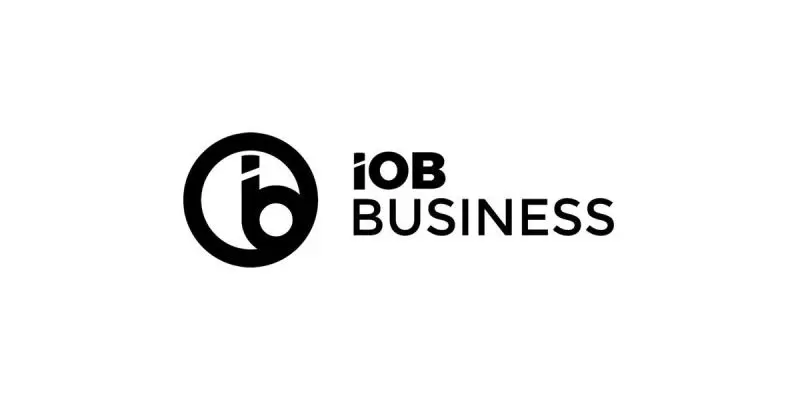Blog
In today’s fast-paced digital ecosystem, decisions need to be quick, accurate, and impactful. That’s where data-driven strategies shine.

March 26, 2025
By
Kamran Awan
Category
Digital Agency
Introduction to data-driven digital marketing
What does "data-driven" mean?
The term "data-driven" gets thrown around a lot, but what does it actually mean—especially in marketing? At its core, a data-driven digital marketing strategy uses insights gathered from data to guide decisions, plan campaigns, and optimise results. Rather than relying on gut feelings, trends, or assumptions, marketers lean into actual data collected from customer interactions, analytics tools, and CRM systems.
Imagine being a chef. Instead of throwing random ingredients into a pot, you measure, test, and tweak until the flavour is just right. That's how data works in marketing—it helps you know exactly what your audience wants and how to serve it. From website traffic patterns and social media engagement to email click-through rates and ad performance, data gives you the full picture.
In a data-driven world, every action has a reason behind it. You're not posting content at random times or sending emails based on a hunch. You're tracking metrics, analysing behaviours, and making informed choices. That's the difference between guessing and growing.
Why is it important in digital marketing?
In today's fast-paced digital ecosystem, decisions need to be quick, accurate, and impactful. That's where data-driven strategies shine. They don't just minimise waste—they maximise ROI. Every dollar spent is backed by numbers, and every campaign can be traced back to performance data.
Let's face it: the digital space is saturated. Consumers are bombarded with messages, offers, and ads every second. If your messaging isn't laser-focused and tailored, it'll get lost in the noise. Data helps you personalise marketing like never before—showing the right message, to the right person, at the right time.
Another reason data is crucial? Optimisation. With real-time data, you can tweak underperforming campaigns on the fly, A/B test elements like subject lines or CTAs, and adjust budgets based on performance. It's like having a GPS for your marketing journey—you'll always know if you're on the right track or need to reroute.
Finally, a data-driven approach builds credibility. When stakeholders see that decisions are grounded in data, it's easier to justify budgets, experiment with new ideas, and scale strategies.
Understanding your marketing objectives
Defining clear and measurable goals
Before diving into analytics dashboards or launching your next big campaign, it's critical to know where you're headed. That means setting clear, measurable marketing goals. These are your benchmarks for success—the signposts that keep your strategy grounded.
Let's break it down. A goal like "increase brand awareness" sounds good, but how do you measure that? Instead, think: "Grow social media followers by 20% in 3 months" or "Increase email open rates by 10% quarter-over-quarter." These goals are SMART: Specific, Measurable, Achievable, Relevant, and Time-bound.
The beauty of clear goals is they sharpen your focus. They help you prioritise efforts, allocate resources, and measure progress. Without them, you're just throwing darts in the dark.
Whether it's lead generation, conversions, traffic growth, or customer retention, your goals should reflect what really matters to your business. And remember—different campaigns may serve different goals. That's totally okay. What matters is that you can track and evaluate each goal based on real, hard data.
Aligning marketing goals with business objectives
A common pitfall in marketing strategy is working in a silo. You might be crushing your campaign KPIs, but if they don't align with broader business goals, then what's the point?
Let's say your business wants to increase its customer lifetime value. If your marketing team is focused only on acquiring new leads without nurturing existing ones, there's a disconnect. That's why alignment is everything.
Start by understanding the company's top-level objectives. Are they trying to enter a new market? Improve customer satisfaction? Reduce churn? Once you have that clarity, reverse-engineer your marketing goals to support those priorities.
This kind of alignment ensures that marketing isn't just a creative department—it's a revenue driver. It's contributing directly to business outcomes with strategic, focused efforts backed by data.
When marketing and business strategies are synced, everyone moves in the same direction. You avoid wasted efforts, improve cross-functional collaboration, and increase the overall impact of your campaigns.
Identifying the right data sources
First-party, second-party, and third-party data
Not all data is created equal. To build a rock-solid digital marketing strategy, you need to understand the different types of data and how to use them effectively.
First-party data is the gold standard. It's the information you collect directly from your audience—via website behaviour, email subscriptions, purchase history, and customer surveys. It's accurate, relevant, and unique to your brand.
Second-party data comes from a trusted partner. Maybe you collaborate with a company that shares user data collected from their own platforms. It's still reliable, but you didn't gather it firsthand.
Third-party data is aggregated from multiple sources and sold by data providers. It's broader and less personalised but can offer useful insights into larger trends or new audience segments.
The best strategies usually rely on a combination, but prioritise first-party data whenever possible. With increasing data privacy regulations, owning your own data is becoming more important than ever.
Knowing which data to use—and when—can help you better understand your audience, target ads more precisely, and improve your content personalisation game.
Tools for collecting and managing data
Here's where the magic happens. Collecting and managing data effectively requires the right tools in your tech stack. Some essentials include:
- Google Analytics for tracking site traffic and user behaviour
- CRM systems like HubSpot or Salesforce for customer data and segmentation
- Email marketing platforms like Mailchimp or Klaviyo for engagement tracking
- Social media analytics from platforms like Meta, LinkedIn, or Twitter
- Data management platforms (DMPs) for organising and analysing third-party data
It's also crucial to ensure data hygiene. Regularly clean, verify, and update your data to avoid basing decisions on outdated or incorrect info. Set clear governance policies so everyone on your team knows how data should be collected, stored, and used.
Finally, don't forget about privacy. Be transparent with users, get proper consent, and stay compliant with regulations like GDPR and CCPA.
Creating customer personas based on data
Segmenting your audience
Not all customers are created equal. That's why segmentation is a game-changer. It allows you to tailor your marketing messages and tactics to different groups within your audience, rather than treating everyone the same.
Start with the basics—demographics like age, gender, location. But to really get value, dig deeper into psychographics and behaviour. What are their interests? What problems are they trying to solve? How do they interact with your content?
Use tools like Google Analytics, heat maps, and social listening platforms to collect this info. Then, organise users into groups like:
- New visitors vs. returning customers
- High-value purchasers vs. occasional buyers
- Email engagers vs. social followers
How to use behavioural data to define personas
Once you've segmented your audience, take it a step further—build out detailed customer personas. But forget guesswork. Use behavioural data to create personas that reflect reality, not assumptions.
For instance, if data shows one group consistently clicks on blog content about budgeting tips, you might create a persona like "Savvy Spender Sarah"—a budget-conscious shopper looking for value deals.
Include real data points like:
- Common devices used
- Peak activity times
- Conversion triggers
- Purchase frequency
Personas based on behaviour are more accurate and useful because they're dynamic. They evolve with your audience, and they're grounded in real interactions, not stereotypes.
Choosing the right marketing channels
Evaluating which platforms work best
With so many platforms available—from Instagram and TikTok to LinkedIn, Google Ads, and email—it's easy to spread yourself too thin. The key is not to be everywhere but to be where your audience is. A data-driven digital marketing strategy starts by evaluating each platform based on performance metrics and user behaviour.
Start by asking: where does your audience hang out? B2B audiences may be more active on LinkedIn, while Gen Z prefers TikTok or Snapchat. Google Analytics can help you identify where your web traffic is coming from, and social media insights show which platforms generate the most engagement.
Look beyond just surface-level metrics. A platform might drive a lot of traffic, but are those users converting? Are they bouncing off your site immediately, or are they staying and exploring?
Use data like:
- Click-through rates (CTR)
- Conversion rates
- Cost per acquisition (CPA)
- Engagement time
- Return on ad spend (ROAS)
Also, don't forget to experiment. Test emerging platforms and monitor performance. Just because a channel underperforms now doesn't mean it can't become a powerhouse with the right approach and messaging.
Channel performance and customer journey mapping
Understanding how each channel fits into your customer's journey is crucial. Not every touchpoint leads directly to a sale—but that doesn't make it unimportant. This is where customer journey mapping comes into play.
Map out how your users interact with your brand across different stages:
- Awareness: Social media posts, SEO blogs, display ads
- Consideration: Product pages, email newsletters, webinars
- Conversion: Cart pages, discount codes, reviews
- Retention: Follow-up emails, loyalty programmes, retargeting
Tools like Google Analytics 4, Mixpanel, or HubSpot offer journey visualisation features. Use them to spot bottlenecks, identify high-impact channels, and track how multi-channel campaigns contribute to your overall goals.
Integrating this knowledge into your strategy ensures that your messaging and efforts are not only consistent but also strategic. You'll start treating each channel not just as a campaign silo but as a contributor to a cohesive customer experience.
Using data to inform content strategy
Analysing top-performing content
One of the smartest moves in a data-driven content strategy is doubling down on what already works. And the only way to know what's working is to dive deep into content performance analytics.
Start by reviewing blog traffic, video watch time, bounce rates, and social shares. Look at metrics like:
- Average time on page
- Engagement rates
- Backlinks earned
- Comments and shares
- Conversions generated
Use tools like Google Search Console to see which keywords are bringing in organic traffic, and which pages have high impressions but low CTRs. These are opportunities to optimise titles, meta descriptions, or calls to action.
It's not just about traffic either. If a piece of content leads to a lot of sign-ups, downloads, or sales, it's a goldmine. Reverse engineer it. What tone did you use? What was the CTA? Where did you place it?
This kind of performance analysis ensures your content isn't just creative—it's strategic and purposeful.
Creating content that aligns with user intent
Ever read something that felt like it missed the mark? That's usually because it didn't align with user intent. Understanding intent—what the user actually wants when they search—is essential for content that performs.
There are generally four types of intent:
- Informational – Looking for knowledge (e.g., "how to create a content calendar")
- Navigational – Searching for a specific website or brand (e.g., "HubSpot blog")
- Transactional – Ready to make a purchase (e.g., "buy running shoes online")
- Commercial Investigation – Comparing products (e.g., "best CRM for small business")
- Use keyword tools like Ahrefs or SEMrush to analyse intent. Then, match your content format accordingly:
- Blogs and guides for informational queries
- Product pages for transactional intent
- Comparison posts for commercial investigation
And here's where data takes it to the next level. Track how users behave after landing on a piece of content. Do they bounce? Do they move to another page? This behaviour gives you clues about whether your content truly served their intent—or left them hanging.
Personalising the user experience
Dynamic content and real-time targeting
Personalisation isn't just a buzzword anymore—it's expected. And thanks to data, you can go beyond just using a customer's first name in an email. We're talking about dynamic content that adapts based on user behaviour, preferences, and real-time data.
For instance, a returning visitor to your website can see different content than a first-time visitor. Someone who downloaded an eBook last week might be shown a product demo today. Tools like HubSpot, Optimizely, and Adobe Target make this kind of smart personalisation a breeze.
Here are a few ways to personalise using data:
- Displaying geo-targeted offers
- Recommending products based on past views
- Customising homepage banners for logged-in users
- Sending triggered emails based on behaviour (e.g., cart abandonment)
A/B testing and optimisation
Personalisation is powerful—but only if you know what works best. That's where A/B testing comes into play. It lets you test variations of your content, ads, or layouts to see which one performs better, all backed by cold, hard data.
Test elements like:
- Subject lines in emails
- CTA button colours and copy
- Hero images on landing pages
- Ad copy and creatives
Use platforms like Google Optimize, Unbounce, or VWO to run split tests efficiently. Just be sure to test one element at a time to keep your data clean and conclusions clear.
Over time, these insights stack up, helping you create content, landing pages, and ads that are statistically more likely to succeed.
Integrating automation in your strategy
How automation enhances data-driven marketing
In the world of digital marketing, time is money. Automation not only saves time but also ensures that every touchpoint is data-informed and precisely timed. Whether it's email campaigns, ad bidding, or customer segmentation, marketing automation turns your data into dynamic action.
Imagine setting up an email series that triggers based on a user's behaviour—like abandoning a cart or downloading an eBook. That's the magic of automation. Tools like ActiveCampaign, HubSpot, and Marketo analyse customer behaviour in real-time and execute pre-defined workflows that keep your brand relevant at every stage.
Here's what automation can do for you:
- Send personalised follow-ups automatically
- Score leads based on engagement data
- Retarget users who visited specific pages
- Segment audiences dynamically based on real-time actions
Best tools for marketing automation
Choosing the right tools is like picking your team. You want reliable players who complement each other and can handle the pressure. Here are a few powerhouse options:
- HubSpot: Great for all-in-one inbound marketing automation, CRM, and analytics.
- Mailchimp: Best for small businesses looking for email automation.
- ActiveCampaign: Ideal for advanced segmentation, tagging, and email workflows.
- Marketo: Enterprise-level solution perfect for scaling and integration.
- Zapier: Connects hundreds of apps to automate multi-platform workflows.
The key is choosing tools that integrate well with your CRM, analytics, and content systems. This ensures data flows freely and your automation can act on it without hiccups.
Measuring success with key performance indicators (KPIs)
Choosing the right KPIs
It's one thing to run campaigns; it's another to measure if they actually worked. KPIs—Key Performance Indicators—are the lifeblood of any data-driven marketing strategy. They keep you accountable and focused on what really matters.
But not all KPIs are created equal. The right metrics depend on your goals. For example:
- If your goal is brand awareness → Track impressions, reach, and share of voice
- If your goal is lead generation → Monitor form fills, MQLs, and cost per lead
- If your goal is sales → Focus on conversion rate, customer acquisition cost (CAC), and revenue
It also helps to establish benchmark data. Knowing your past performance allows you to measure progress and set realistic future goals. This way, your strategy evolves with evidence—not assumptions.
Using dashboards for real-time reporting
Gone are the days of manual reports and scattered spreadsheets. Today, dashboards give you a live view of your marketing performance, all in one place. Tools like Google Data Studio, Tableau, and Klipfolio help you build custom dashboards that display your most important KPIs in real-time.
Dashboards make it easier to:
- Spot trends early
- Identify what's working (and what's not)
- Share insights with stakeholders
- Make quick data-driven decisions
Set up different dashboards for different teams—your content team might want engagement stats, while your sales team focuses on lead quality. Tailored views ensure that everyone stays aligned and informed.
When everyone on your team has access to clear, actionable insights, collaboration improves and performance skyrockets.
Adapting to market changes with agile marketing
Staying flexible in a fast-moving landscape
One of the biggest advantages of a data-driven approach is adaptability. Trends shift, algorithms change, and consumer behaviours evolve overnight. If your strategy can't pivot, it will fall behind. That's where agile marketing comes in.
Agile marketing is all about quick iterations and constant feedback. Instead of planning campaigns months in advance, you roll out smaller initiatives, track their performance, and tweak in real-time. Think of it like driving a car—you're constantly adjusting the wheel based on the road ahead.
Data is your navigator. It tells you what's gaining traction and what needs to be dropped. Weekly sprint reviews, performance audits, and team retrospectives help keep your strategy nimble and efficient.
Real-world example? If a paid ad isn't converting after 72 hours, you adjust the creative or audience targeting. If an email subject line bombs, you test another one the next day. Agile means you don't wait until the campaign ends to evaluate—it's always evolving.
Iterative testing and continuous improvement
In a data-driven strategy, your job is never truly "done." Every campaign is a learning opportunity, and every result fuels the next idea. Iterative testing allows you to build better campaigns brick by brick.
Here's a simple approach:
- Launch a campaign with a clear hypothesis.
- Track key metrics (clicks, conversions, time on page).
- Analyse what worked and what didn't.
- Apply those lessons to the next round.
- Repeat.
Even small experiments—like changing the placement of a CTA or adding a video to your landing page—can yield massive improvements when tracked over time.
Building a culture of data-driven decision making
Training teams to use data effectively
Even the best strategy falls flat if your team doesn't know how to use data. That's why training is crucial. Everyone—whether in marketing, sales, or support—should understand how to read reports, ask the right questions, and act on insights.
Start by demystifying the data. Host workshops or internal webinars explaining common metrics and their significance. Use real case studies from your company to make it relatable.
Encourage cross-department collaboration. Marketers should understand sales funnel data. Sales teams should know what lead magnets are performing best. When everyone speaks the same data language, alignment becomes natural.
Also, invest in ongoing learning. Tools evolve fast. Platforms update. Keeping your team up-to-date ensures you're always leveraging the latest and greatest.
Creating a feedback loop across departments
A data-driven culture doesn't stop at marketing. It spans the whole organisation. Creating feedback loops between departments ensures that insights are shared and strategies are aligned.
For example:
- Sales teams can share which leads convert best → Marketers can adjust targeting.
- Customer support can flag common issues → Content creators can address them in blogs or FAQs.
- Product teams can share user behaviour → Email teams can refine messaging.
- Use tools like Slack, Notion, or Asana to share dashboards, reports, and insights in real time. Schedule regular cross-team meetings to review performance and brainstorm improvements.
Conclusion
Creating a data-driven digital marketing strategy isn't just a trend—it's a necessity in today's hyper-competitive, information-saturated digital world. With consumers expecting personalised experiences and instant value, businesses that rely solely on intuition are bound to fall behind. Data is the foundation that allows you to meet your audience where they are, speak their language, and provide solutions before they even know they need them.
By setting clear objectives, collecting the right data, and using that information to tailor your messaging, you're building a marketing machine that learns, adapts, and improves over time. This isn't about perfection—it's about iteration. Every campaign, every test, and every customer interaction feeds your data loop, making your future efforts smarter and more impactful.
From automation and personalisation to KPIs and agile practices, a data-driven approach connects all the dots. But most importantly, it shifts your mindset. Marketing stops being a guessing game and becomes a performance engine, fuelled by insights and driven by results.
The brands that win in today's landscape are the ones that not only collect data but truly listen to it. Be one of those brands. Make data your compass, and your marketing strategy will always stay ahead of the curve.
FAQs
Q: What is a data-driven digital marketing strategy?
A: A data-driven digital marketing strategy uses insights from customer data to guide decisions about content, channels, targeting, and timing. It's all about optimising campaigns based on real performance metrics instead of assumptions or trends.
Q: How do I start building a data-driven strategy from scratch?
A: Start by identifying your business goals and aligning them with measurable marketing KPIs. Collect and analyse data from sources like Google Analytics, your CRM, and social media platforms. Use that data to segment your audience, choose the best channels, and personalise your messaging.
Q: What tools are essential for a data-driven marketing strategy?
A: Some must-have tools include:
- Google Analytics for web behaviour
- HubSpot or Salesforce for CRM
- Mailchimp or ActiveCampaign for email automation
- SEMrush or Ahrefs for SEO and keyword data
- Google Data Studio or Tableau for reporting
Q: How often should I review and update my strategy?
A: Review your performance weekly or bi-weekly with dashboards and key reports. Major strategy reviews should be done quarterly, but stay agile—pivot anytime data shows a significant trend or shift in customer behaviour.
Q: Can small businesses also benefit from data-driven marketing?
A: Absolutely. In fact, small businesses often benefit the most because data allows them to compete with larger players by targeting niche audiences more effectively. With affordable tools and automation, even lean teams can run high-performing, insight-driven campaigns.
To find out more about how you can start your own Digital Agency, please contact a member of our team.
Until next time, take care.
Share this Post






















